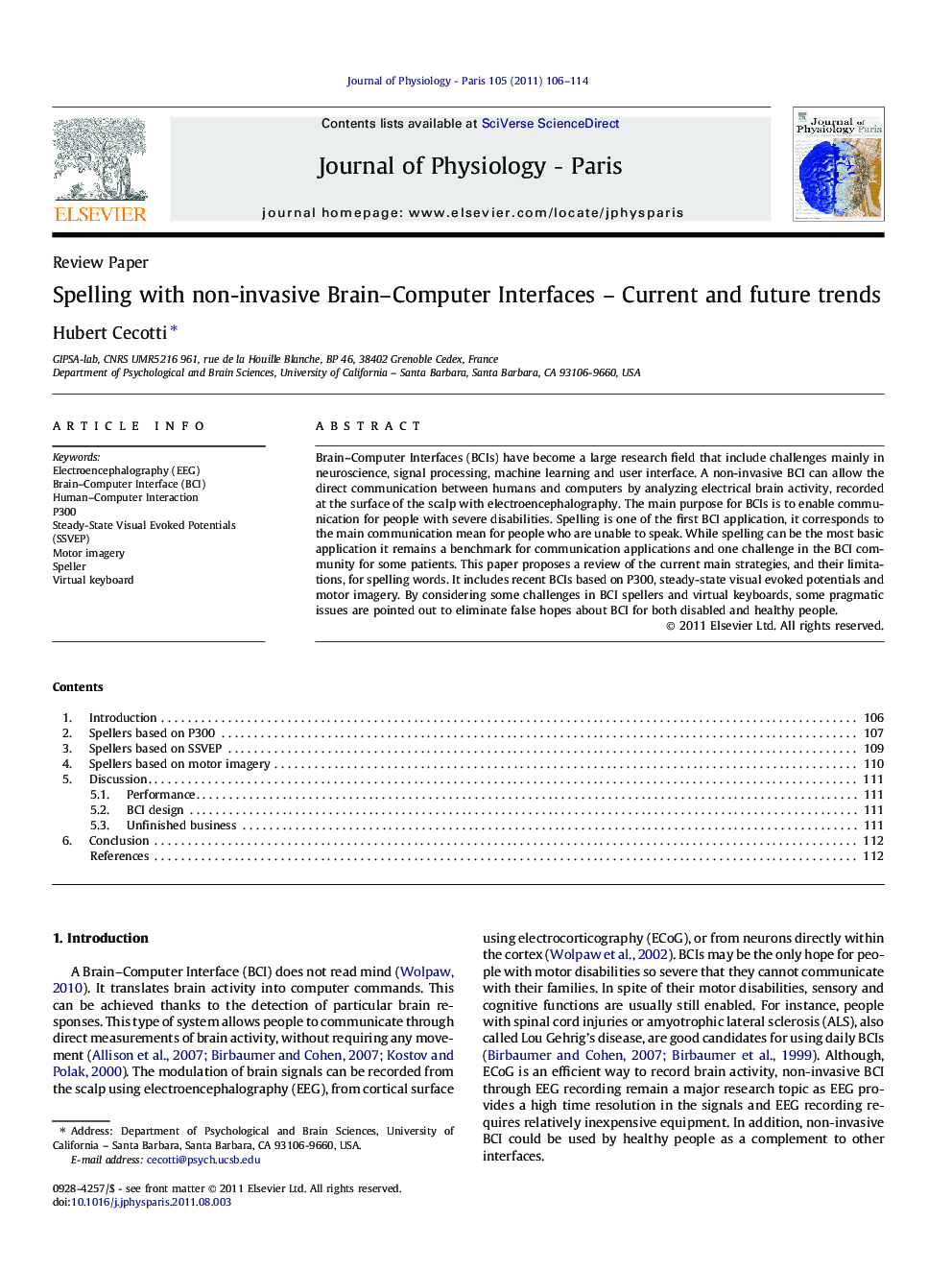| Article ID | Journal | Published Year | Pages | File Type |
|---|---|---|---|---|
| 2842232 | Journal of Physiology-Paris | 2011 | 9 Pages |
Brain–Computer Interfaces (BCIs) have become a large research field that include challenges mainly in neuroscience, signal processing, machine learning and user interface. A non-invasive BCI can allow the direct communication between humans and computers by analyzing electrical brain activity, recorded at the surface of the scalp with electroencephalography. The main purpose for BCIs is to enable communication for people with severe disabilities. Spelling is one of the first BCI application, it corresponds to the main communication mean for people who are unable to speak. While spelling can be the most basic application it remains a benchmark for communication applications and one challenge in the BCI community for some patients. This paper proposes a review of the current main strategies, and their limitations, for spelling words. It includes recent BCIs based on P300, steady-state visual evoked potentials and motor imagery.
► Brain-computer interfaces for spelling are promising tools for disabled people. ► Although some progress has been achieved, several challenges exist for providing reliable solutions. ► Future works shall be carried out on the adaptation of virtual keyboards to specific needs, directly for the user.
